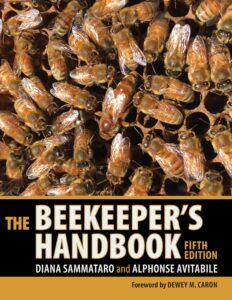The Beekeeper’s Handbook 5th Edition

Since 1973, tens of thousands of first-time and experienced beekeepers alike have relied on The Beekeeper’s Handbook as the best single-volume guide to the hobby and profession of beekeeping. Featuring clear descriptions and authoritative content, this handbook provides step-by-step directions accompanied by more than 100 illustrations for setting up an apiary, handling bees, and working throughout the season to maintain a healthy colony of bees and a generous supply of honey. This book explains the various colony care options and techniques, noting advantages and disadvantages, so that beekeepers can make the best choices for their own hives.
This fourth edition has been thoroughly redesigned, expanded, updated, and revised to incorporate the latest information on Colony Collapse Disorder, green IPM methods, regional overwintering protocols, and procedures for handling bees and managing diseases and pests such as African honey bees and bee mites. The book explains not only how but also why each step is part of the transformative process that results in the magnificent creation of honey. This essential guide is a beekeeper’s most valuable resource.
Colony Collapse Disorder has renewed our recognition of the importance of small-scale beekeeping and the critical role of bees in the production of our food supply. For the growing number of beekeepers looking to set up hives for either a rewarding hobby or a profitable commercial enterprise, this updated and revised essential how-to guide includes:
• step-by-step directions for all stages from setting up an apiary to harvesting honey;
• approximately 100 illustrations featuring techniques, equipment, and bee biology;
• information about how to manage new pests and diseases including Colony Collapse Disorder;
• coverage of new trends and changes in beekeeping including green IPM techniques and new laws for urban beekeeping;
• the most up-to-date bibliography and list of resources on the topic; and
• a new user-friendly book design that clearly highlights instructions and other important features.
